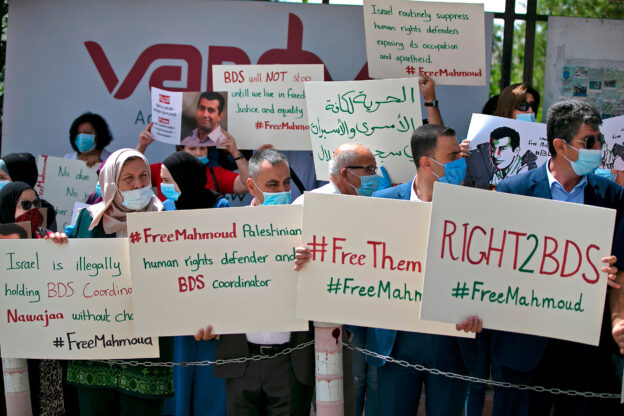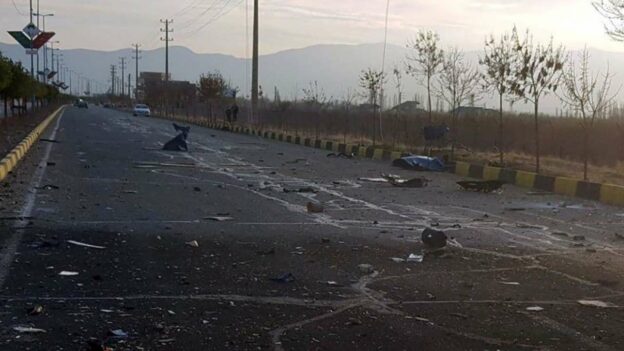Anyone with the unfortunate habit of listening to talk shows may have noticed the inverse relationship between loudness and logic. Or as Leonardo da Vinci is said to have said, “Where there is shouting, there is no true knowledge.”
It’s true in daily life too. Some people seem to imagine that decibels are arguments, that screaming angrily is a good-enough stand-in for persuasion — even for facts.
Last week, across the big pond to the east, the Israeli ambassador to Great Britain, Tzipi Hotovely, after speaking and taking questions at the renowned London School of Economics, was set upon by a screaming crowd of Arab and Muslim students. Egged on by social media to “smash her car window,” members of the mob loudly shouted slogans, curses, “shame on you” and other rational arguments.
Security officers and bodyguards bundled the ambassador into a car while police clashed with the shouting mob.
(British Home Secretary Priti Patel tweeted that she was “disgusted by the treatment of the Israeli Ambassador.” Foreign Secretary Liz Truss and Nadhim Zahawi, Secretary of State for Education, expressed similar reactions.)
The mob’s screaming was a stark contrast to the sort of reasoned give-and-take that had just taken place inside the building. And further evidence of the loudness/logic inverse relationship.
Because the screamers, at least the smarter ones, likely know, deep down, that Israel does not, as they chant, target civilians when responding to Hamas terror attacks or seek to oppress its Arab citizens. So all that’s left to “make their case” is yelling.
But beneath the baseless charges of baby killing and subjugation lies a broader, equally baseless charge made by many anti-Israel “activists” (if slander can be described as activism).
That larger untruth is the very “Palestinian narrative,” the contention that the Jewish return to Eretz Yisrael was a colonial venture, the displacement of a native population by foreign usurpers.
It makes for a great shout, and shouted it is, at rallies and protests around the world, often encapsulated as “From the River to the Sea, Palestine Will Be Free!” (Translation: “Kill or expel Jews from the land.”)
And shouting is the only way to promote the narrative, the only means of allowing it to obscure the facts of history.
To be sure, Arabs have lived in Eretz Yisrael for centuries, but the land has never been Judenrein. Jews were a presence in the land since Yehoshua’s time, even after the destruction of the Second Beis Hamikdash and the expulsion of most of Klal Yisrael from their land.
And, of course, millions upon millions of Jews have, over the centuries since 70 C.E., prayed thrice daily for divine mercy to allow them to return — return — to their land — their land.
What’s more, the Arab presence in 1948 Palestine was anything but indigenous. Many who call themselves native “Palestinians” are in truth descended from successive waves of people who came to the area from other places.
Like Egypt, the source of successive waves of immigrants at the end of the 18th century, fleeing famine and government oppression at home.
The 19th century saw Arab immigration to Eretz Yisrael from Algeria and what is now Jordan. Bosnian Muslims, too, came in significant numbers.
Later on, after Jews began returning to the land, opportunities drew even more Arab immigrants. As Britain’s Peel Report noted in 1937, “The Arab population shows a remarkable increase ….. partly due to the import of Jewish capital into Palestine and other factors associated with the growth of the [Jewish] National Home…”
So, when Israel declared its statehood in 1948, there was a sizable Arab population in Eretz Yisrael. And the desires and aspirations of that population and its descendants in the land should not be ignored. But many, if not most, were not native to the land. And the forebears of Jews, if millennia matter, were.
Arabs residing in the country or the West Bank or Gaza could realize their hopes for better lives, if only they acknowledged those truths. Then, good-faith, civil discussion could ensue.
It is an unlikely development, I admit, but one thing is certain: Shouting is no replacement for talking.
© 2021 Ami Magazine








